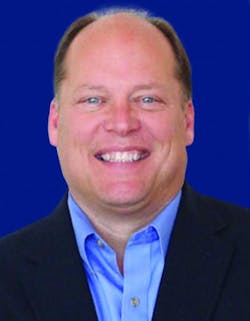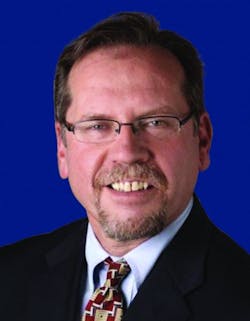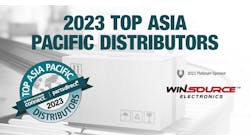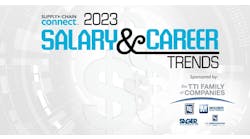Industrial distributors are more upbeat these days as the economy slowly improves and business shows signs of growth—but business leaders say there are still some areas of concern.
Global Purchasing spoke to three distribution executives—Bill Steury, president of the automation group, Cross Co.; Pat Grady, business development manager, Kraft Fluids Co.; and Keith Nowak, president, MPT Drives—to get their thoughts and ideas on where their companies are and where their industries may be headed as 2014 winds down.
For distributors, managing supplier relationships can be a cause for concern.
“We have to manage supplier relationships. We don’t make anything, really. We buy and sell. We can only be as good in our customers’ eyes a lot of times as our suppliers are to us,” said Steury. “So whether it’s quality issues or late deliveries or those kind of things, we probably struggle with that just based on how our suppliers perform.”
Nowak expressed his concerns over what he sees happening more often: dealing with less experienced supplier and manufacturer employees, many with vastly less experience than MPT Drives’ people.
“A lot of the issues we have are with suppliers now,” explained Nowak. “I guess things have picked up a bit [in manufacturer hiring], so we are ending up with a lot of newer people we have to deal with. My particular company has a lot of people who have been here a long time. They are very knowledgeable about the industry. But now we are dealing with vendors [where a] customer service person has been on the desk for [only] three or four months. That’s probably been one of my biggest headaches.”
Nowak says he is all in favor of promoting good people, of course. But the experience factor is a point of emphasis for him.
“It seems every time [a company gets] a good person in there, they end up promoting them somewhere and taking them out of customer service, which I think is a shame,” Nowak said. “I think they should leave some good veterans in customer service, but quite often they don’t.”
New Products, Innovations
Several new products have emerged that represent challenging but potentially profitable innovations for distributors, especially in automation and hydraulics.
Pat Grady addressed the ongoing challenges that new products present for him and his company. Kraft, headquartered in Strongsville, Ohio (outside of Cleveland) is a distributor of power transmission, hydraulic, and electronic control equipment.
The development of new types of Tier 4 engines has meant more business for Kraft, but also comes with a unique set of challenges.
“With the Tier 4 engines and diesels…[as used in] construction machinery and agriculture, there is a need to save as much horsepower as possible,” Grady said. “At the same time, there is a need to cool these things. So the heat transfer part of the business is very important to the new Tier 4s.”
Another factor is that even a slight increase in horsepower for these engines can mean added expense.
“There is a lot of design work going on to keep requirements and needs below 75 [horsepower], because the engines get very expensive as you go up in class,” explained Grady. “So efficiency in hydraulic and electronic systems is very important right now. I’m talking about mobile equipment, and that is our primary focus.”
For Steury and his automation group at Cross Co., some of the growing innovative product lines they deal with sound like something out of a Star Trek movie or Jules Verne novel.
Robotics—or more accurately “collaborative robotics,” as Steury described them—are a case in point.
“Collaborative robotics is kind of what it sounds like. It is a robot that collaborates with people,” he explained. “It can work alongside people in an assembly line…It is a lightweight robot. They call it ‘flexible robotics’ where you can actually program it very quickly to do different things.”
These collaborative robotic applications are programmable at “human speed,” Steury added, making them effective for use on certain types of assembly lines, among other applications.
“If you can imagine an employee on an assembly line working in a factory where there may be an environmental hazard…so you have to wear masks [for breathing],” he said. “Or there is a repetitive task involved and your limbs are required to do the same thing for a long period of time—moving a piece from one conveyor to another. Carpal tunnel syndrome and those types of things that can affect you physically.”
Moving on?
Knowing when to move on from a customer, or from a product line in general, can be a difficult but necessary decision for distributors.
Suburban Detroit-based MPT Drives, for example, no longer sells directly to automotive companies.
“I don’t sell directly to the auto plants anymore. We gave that up a long time ago. I don’t sell repair parts to them. It is just too much of a hassle. I let Motion and Applied battle each other for those contracts,” Nowak said. “I don’t miss it a bit. Every year they’d want a price decrease and every year I’d get a supplier increase [in price]. It just wasn’t worth it. So we got out of the game.”
MPT Drives also sells to and works with HVAC and related industries. Although they do not sell directly to automotive, many of their customers are involved in it.
“[Our] heaviest sector is automotive OEMs. These are guys building automation that ends up in car plants,” Nowak explained. “That’s probably our biggest. After that, filtration systems, which undoubtedly will often end up in car plants as well. But I’d say 60 to 75% of my business probably ends up in auto plants.”
All three executives agree that the overall economy has improved. How much, and for how long the improvement will be sustained, is another matter.
“It’s up. I don’t think it’s up the way we expected to be at this point in the recovery,” said Grady, who added that hiring hasn’t necessarily picked up, at least not at Kraft Fluids.
“Our productivity is up just like everybody else’s productivity level…But if the economy does keep on growing, even at the 2% rate that they are talking about, I would have to think that eventually hiring will go up also,” Grady said.
Nowak agrees about seeing an improved economy, albeit at a sometimes frustratingly slow pace.
“It is improving. It is better than it was in 2009, in 2010,” Nowak said. “There is no doubt we are better than we were back then. But [MPT Drives] probably had a better year last year than we’re going to have this year … So I would say it is definitely improving, but at a slower pace than I would like. I am not an economist, but you hear them talking and they say it is healthier if we grow slowly. And I can see a reason for that … I guess slow growth is good as long as it is continuous.”
While some sort of economic downturn is inevitable now and then, Grady points to the recent recession and how customers showed a better grasp of containing costs.
“I think costs have been contained much better through this last downturn than I have seen in the past,” Grady said. “People are very aware of their costs.”
Grady drew a contrast between when he first started out in sales and the price was the driving concern to today when the reliability of the product is vital.
“The first question out of a buyer or engineer’s mouth would be ‘What does it cost?’ But that’s not the game anymore,” he explained. “The game is, ‘Is it going to make it? Is it going to last on this application?’ It has to last a long time.”
Another optimistic economic indicator of sorts is what Steury sees happening—increased “re-shoring,” as some manufacturing that had gone overseas is returning to the United States.
“What’s really taken place in the industry is there is a lot of re-shoring from the Far East back to the United States with manufacturing. There’s been a rise in labor costs in the Far East and the productivity of the Asian worker out there has not increased,” Steury explained. “The math does not work out as much anymore to do a lot of things offshore. So, some of these products come back to the United States.”











